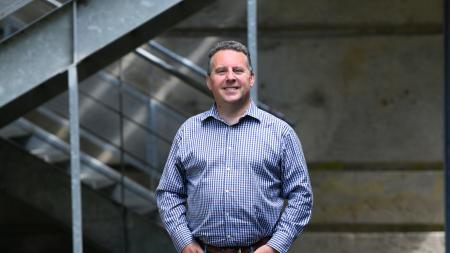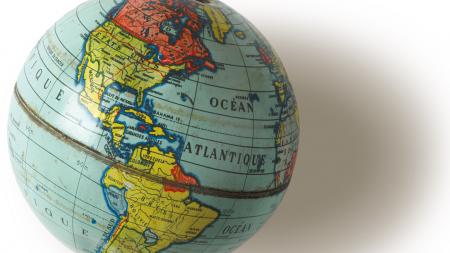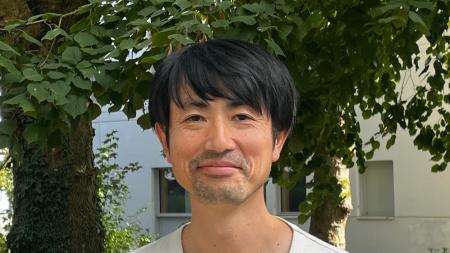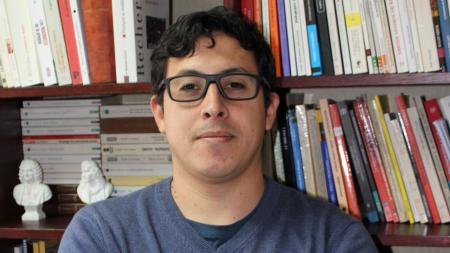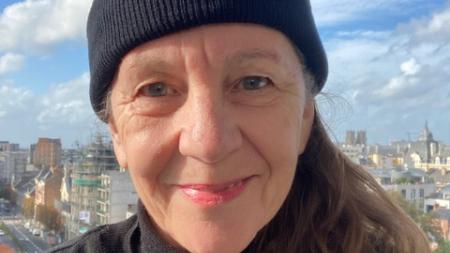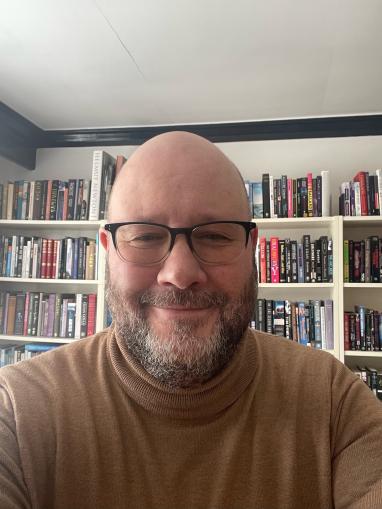
To kick things off, could you detail how your academic path led from traditional literary studies into the digital humanities realm?
Michael E. Sinatra (M.E.S.): My academic journey began deeply entrenched in traditional print culture, specializing in 19th-century British literature. I was trained as a very traditional publishing expert. I did my doctorate at Oxford in the late 1990s. My work was rooted in the classics, engaging with the rich tapestry of Dickens and other literary giants. I started developing an interest in online editing with the invention of the World Wide Web and the spread of the digital revolution in the 1990’s. I launched the first peer-reviewed online journal about British romantic literature in 1996. It was called 'Romanticism on the Net' and it is still going strong all these years later. This was my inaugural venture into blending my literary foundation with the burgeoning digital landscape. Since embarking on this path at the University of Montréal in 2001, I've been exploring the intersection of technology and the humanities, delving into how digital tools not only transform our access to texts but also enrich our understanding of cultural heritage. This exploration has been about leveraging the digital to ask new questions, to analyze literature, history, film and other fields through a fresh lens.
What aspects of digital humanities are you most passionate about, especially in your research?
M.E.S.: The digital humanities excite me for their potential to unveil new dimensions within traditional texts and artworks. Consider the process of encoding texts through initiatives like the Text Encoding Initiative (TEI). This is more than mere digitization. It's about enriching texts with metadata that opens doors to novel analyses and interpretations. For instance, working with students to encode every character movement and geographical reference in a Dickens novel transforms a static piece of literature into a rich dataset ripe for exploration. You could then realize that the whole novel really takes place within one square mile in London, which could open up new ways to look at the story or at Dickens himself.
People have done that with Shakespeare plays to highlight how male protagonists get to talk a lot more than their female counterparts. But they’ve also uncovered that women use many more multisyllable words, which indicate that they had a more elaborate vocabulary than men. Does that mean that Shakespeare considered that men tended to ramble in contrast to women who spoke less but had more interesting things to say? That kind of analysis is something that you can do by hand. Some people actually did. But with the computing power that is available to us these days, we can run this type of analysis across several authors or indeed an entire century of literature.
All of a sudden, you can go over 300,000 novels, which no one can read in their lifetime. And with the help of text processing software, we can begin to look for patterns. For example, we can ask ourselves if something is happening in French literature in the 19th century that is different from what was happening in the 18th century. An historian colleague of mine told me that she can now do in the span of one summer what would have required ten summers of her life, pouring over archives and manually transcribing the data that she was interested in. As you can see, this is quite powerful and very exciting for literary scholars.
But this methodology extends its reach far beyond the written word, affecting how we approach films, television, and even radio, allowing us to apply computational analysis to understand cultural expressions in unprecedented ways. It's the fusion of traditional humanities research with digital tools that empowers us to uncover hidden narratives, thematic patterns, and societal insights across a variety of media.
That’s very impressive. How will the recent advances in AI affect your research and the field of Digital Humanities?
M.E.S.: Well, first, let me point out that AI as we call it now is based on Large Language Models that have been around for a while. But their use was restricted by the computing power that was available to us. Early projects in Digital Humanities needed the old-fashioned wall of computers from IBM or others to run for several days in order to spit out three lines of text. Nowadays, the phone I have in my pocket is more powerful than what was used to send people to the moon. So this is what’s really changed. We can now rely on all these computational capabilities to run queries on very large and complex data sets and hope for unexpected patterns to emerge.
This is exciting, but we have to remain aware of the limitations of these tools no matter how practical and powerful they may seem. Each technology carries with it its own biases, its own implications, its own agenda. Every time you use a tool to produce, share or analyze text, you should be aware of how this tool is shaping your approach to content analysis and creation. How, for example, every time you open Microsoft Word, you deal with a document that is split into pages, which is essentially an unstructured and sequential format. How the telegraph was a military-driven invention meant to control people by sharing information much more quickly between the authorities. How Chat GPT has been coded by Americans developers and scientists and then adapted to other languages. And beyond the strict confines of scholarly work, we have to ask ourselves if we are ok with using tools that have a significant impact on the environment everytime we run a query.
Digital humanities calls for scholars, technologists and artists to redefine what it means to engage with the humanities in a digital world. This field pushes us to not only interpret art and literature through a new lens but also to rethink how we disseminate and share knowledge in the 21st century.
Considering the breadth of digital humanities, what challenges do you face, and how do you address them?
M.E.S.: Navigating the digital humanities landscape presents a unique set of challenges, primarily due to its inherent interdisciplinary nature. We're working with expansive datasets that demand sophisticated analytical tools, which requires bridging the gap between humanities scholars and data scientists. We are also dealing with a wide range of academic fields such as science, art history, media studies, literature, philosophy or religious studies. This blend of disciplines means that it isn’t always easy to communicate with each other, as each field incorporates its own language and methodologies.
So there is a lot of educating and communicating to do about the possibilities offered by some of these new tools. And this is part of my job, meeting colleagues from different disciplines and horizons and discussing these issues. This is why I’m happy to be here in Rennes, where I’ve had the opportunity to exchange with faculty members from various fields.
Can you elaborate on your collaboration with Rennes 2 and how this has allowed you to expand on your work at Université de Montréal?
M.E.S.: Our collaboration with Rennes 2 has been very fruitful over the years. First there is this strong relationship around cinema that has been developing over a 7 year span thanks to a major grant. But our goal is to expand on that foundation and scale up our collaboration. I’ve been working closely with Clarisse Bardiot, Rennes 2 Professor of Performing Arts Studies, on a number of projects. Before coming to France, we had already collaborated on conferences such as DH Nord (organized by the Maison des Sciences de l’Homme Européenne). We’re now trying to build upon what some of my colleagues in Université de Montréal have been doing around the data tagging of TV series. Another thing that is promising is the dual masters that Rennes 2 is offering in Digital Humanities. I believe that it is one of the few programs offered in France that has that dual approach, which opens up a whole bunch of interesting possibilities when it comes to mixing the input and the work of a wide range of faculty departments, whether they be from Rennes or Montréal.
